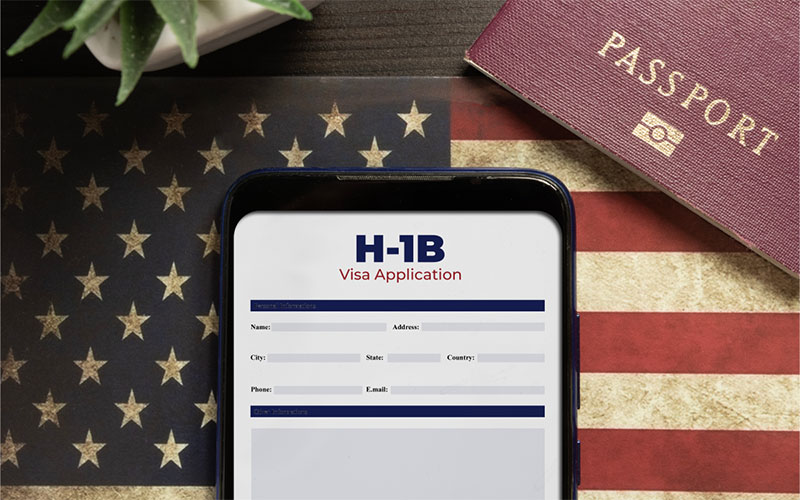Chairman of the Committee Chuck Grassley, a Republican from Iowa, and Democrat Dick Durbin of Illinois have reintroduced legislation to restrict regulations on the H-1B and L-1 worker visa programs. Their objective is to address what they refer to as “loopholes and abuse” by major employers.
The H-1B visa program, which is frequently employed by the U.S. technology sector to recruit skilled workers from India and China, has been the subject of attention since the Trump administration implemented a $100,000 fee on new applications earlier this month.
The L-1 visa, in contrast to the H-1B program for skilled foreign hires, enables multinational companies to relocate their existing employees from overseas operations to the United States.
Last week the two senators, who initially introduced comparable legislation in 2007, sent letters to ten significant U.S. employers, including Amazon.com, Alphabet’s Google, and Meta Platforms, in which they questioned their dependence on H-1B visas in conjunction with staff reductions.
What Type of Visa is H-1B?
In an effort to address labor shortages in specialized disciplines, George H.W. Bush signed a new bill into law in 1990, which established the H-1B program. This program is designed to encourage the immigration of highly skilled workers, including scientists, engineers, and educators.
This transitory visa category enables employers to request the employment of “highly educated” foreign professionals in “specialty occupations” that necessitate a bachelor’s degree or its equivalent. The H-1B visa is typically issued for a three-year initial period and may be extended for a maximum of six years.
As per a January 2025 report from fwd.us, an immigration and criminal justice advocacy organization, the United States is home to approximately 730,000 H-1B holders and an additional 550,000 dependents, including spouses and children, who collectively constitute nearly 1.3 million residents.
In the past, the cost of an H-1B visa varied from approximately $1,700 to $4,500, contingent upon whether the visa was expedited. A lottery system is used to award the maximum number of H-1B visas, which is capped at 85,000 by Congress each year. Companies are required to pay a $215 registration fee in order to participate, and if they are chosen, they will incur additional application fees and legal expenses totaling thousands of dollars.
https://international.indianapolis.iu.edu/visas/departments/h1b-workers/h1b-fees.html
Why did the Changes Cause Panic?
On 19 September, President Donald Trump stunned the tech world by announcing an up to 50-fold hike in the cost of skilled worker permits. Chaos followed: Silicon Valley firms urged staff not to travel outside the country, overseas workers scrambled for flights, and immigration lawyers worked overtime to decode the order.
Later the White House sought to calm the storm, clarifying that the fee applied only to new applicants and was a one-off. Yet, the long-standing H-1B programme – criticised for undercutting American workers but praised for attracting global talent – still faces an uncertain future.
Even with the tweak, the policy effectively shutters the H-1B pipeline that, for three decades, powered the American dream for millions of Indians and, more importantly, supplied the lifeblood of talent to US industries.
Indians dominate the H-1B programme, making up more than 70 percent of the recipients in recent years. (China was the second-largest source, making up about 12% of beneficiaries.)
In tech, their presence is even starker: a Freedom of Information Act request in 2015 showed over 80 percent of “computer” jobs went to Indian nationals – a share industry insiders say hasn’t shifted much.
The medical sector underlines the stakes. In 2023, more than 8,200 H-1Bs were approved to work in general medicine and surgical hospitals.

